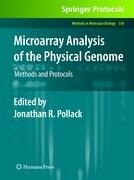

Most ebook files are in PDF format, so you can easily read them using various software such as Foxit Reader or directly on the Google Chrome browser.
Some ebook files are released by publishers in other formats such as .awz, .mobi, .epub, .fb2, etc. You may need to install specific software to read these formats on mobile/PC, such as Calibre.
Please read the tutorial at this link. https://ebooknice.com/page/post?id=faq
We offer FREE conversion to the popular formats you request; however, this may take some time. Therefore, right after payment, please email us, and we will try to provide the service as quickly as possible.
For some exceptional file formats or broken links (if any), please refrain from opening any disputes. Instead, email us first, and we will try to assist within a maximum of 6 hours.
EbookNice Team

Status:
Available0.0
0 reviewsIn the early years of microarray technology, efforts were directed mainly at profiling expressed genes, while recently the microarray platform has been adapted into diverse applications directed toward the investigation of the physical genome. In Microarray Analysis of the Physical Genome: Methods and Protocols, experts in the field cover DNA microarray applications for the detection and characterization of genomic DNA-associated copy number alteration, loss of heterozygosity (LOH), cytosine methylation, protein binding sites, regulatory elements, and replication timing, with an emphasis on higher eukaryote (animal) and cancer genomes. Written in the highly successful Methods in Molecular Biology™ series format, chapters include a brief introduction to their respective subjects, lists of the necessary materials and reagents, step-by-step protocols, and time-saving notes on troubleshooting and avoiding known pitfalls.
Authoritative and easy-to-use, Microarray Analysis of the Physical Genome: Methods and Protocols is of great value to the molecular biologist or computational biologist interested in understanding the principles of these analyses or in planning future experiments using microarrays to characterize the physical genome.